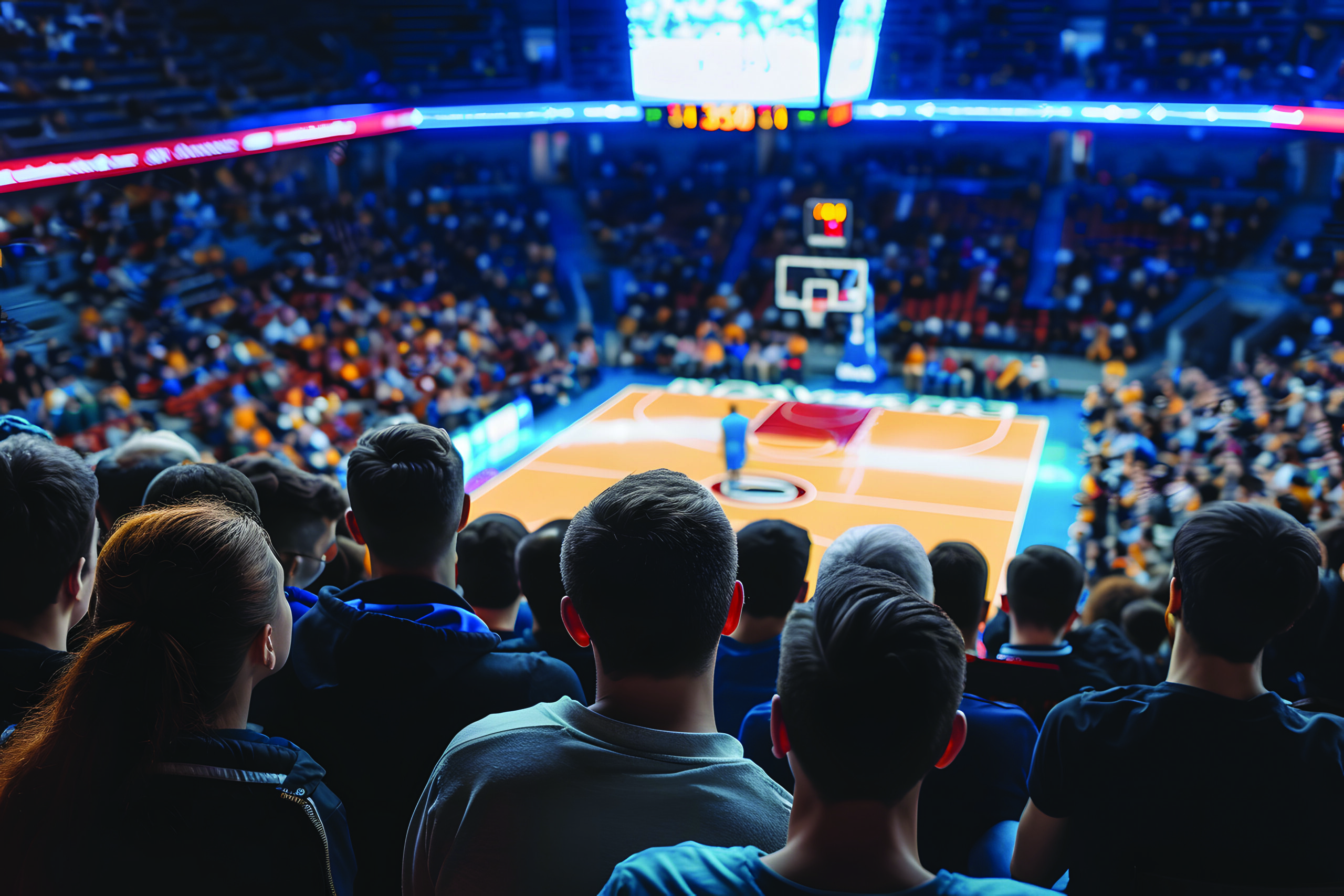
By Jon Last
Founder & President
Sports & Leisure Research Group
White Plains, New York
jlast@sportsandleisureresearch.com
No one needs sports to survive, but few categories evoke the levels of passion and commitment that emanate from sports. It can infiltrate our collective consciousness in unique and enthralling ways that transcend other forms of entertainment. This may help explain why sports have become such big business.
Sports’ decisive outcomes, ability to capture our attention, and escape life, plus the franchise’s larger-than-life personas and brand personalities, all capture our imagination. Sports combine the purest forms of competition and physical exertion with a unique ability to evoke emotion.
I’ve often expressed that being a fan of a team is like being a parent . . . the team will sometimes make you proud and sometimes frustrate you to no avail. But through thick or thin, it will always hold a place in your heart. As a lifelong participant and avid fan, sports have been central to my personal life, and as a market researcher, sports are also a driving force and focus of my career.
MAJOR TRENDS AND INSIGHT NEEDS DRIVING SPORTS MARKETING RESEARCH
A Need for Research
Like any rapidly evolving business, sports marketing and the research that helps to inform it have undergone significant change in recent years. With team valuations and revenue from category product manufacturers at unprecedented levels, sports properties (i.e., teams and leagues) and sporting goods brands have recognized a need for stakeholder insights to guide critical decisions.
From the property side, there is an acute recognition that discretionary time and dollars are perishable commodities. Sports businesses have committed to better understanding the motivations behind fan engagement to build affinity against a broad competitive set that includes other teams but also all forms of entertainment and diversion.
Teams, leagues, and the venues that host them frequently turn to research to better understand the fan lifecycle and changing motivations behind live attendance versus media consumption of the product.
There has been a growing interest in learning more about the most compelling connection points, and increasingly, the answers vary across different segments of fans driven by both demographic and psychographic realities.
 Star Power Versus Team Affinity
Star Power Versus Team Affinity
One primary question that research has explored is finding the right balance between celebrating and creating star players versus building a focus on teams or the competition itself. First, as context, sports properties are now reaching a much broader audience ranging from lifelong fans, familiar with the nuances and histories of their respective sports teams, to a larger more casual fan base, identified in some of our research as “event enthusiasts” who flock to sporting events for the abundance of social experiences.
With the popularity of fantasy sports and legalized sports betting, there is also now a segment that participates in what we’ve defined as participatory fandom, where followers are more focused on individual athletes who become part of their fantasy teams or proposition bets. This phenomenon poses a quandary for sports marketers. On the one hand, a focus on the individual and the media’s fascination with the on-and-off field pursuits of top athletes has made sports more accessible to newer, more casual fans, who are vital in growing incremental revenue. On the other hand, if they are more focused on individual players, this de-emphasizes loyalty to their respective properties and often makes it more difficult to maximize revenue through ticket and media rights sales. A vivid example of this can be evidenced in professional golf, where television ratings and event attendance have consistently been highest when Tiger Woods is participating.
In focus groups we’ve conducted for several teams, a frequent fan gripe is when homegrown talent is traded away. This has become fertile ground for sports research companies like ours—to evaluate the magnitude of these loyalties and their impact, not to mention landing on the right communications and channels.
Qualitative researchers are often invaluable in testing marketing collateral and evaluating ways different segments of fans use an evolving media mix.
The Generational Divide and Sports Consumption
For many spectator sports, there is a deep generational divide between long-term core fans and younger fans.
Older, long-time fans are accustomed to free access via broadcast and cable networks. The younger digital natives are accustomed to consuming sports in mobile video snippets via streaming, social media, and other transactional delivery systems.
Qualitative research helps marketers know how to best align content to the needs, engagement levels, and stylistic preferences of each segment.
Complementary Brand Stakeholders
Another critical stakeholder in sports marketing is the myriad of complementary brands that invest billions of dollars in

sponsoring and advertising around all elements of the sports ecosystem—from clothing and drink manufacturers to health insurance companies.
Their research needs are numerous and include everything from evaluating the alignment of an athlete or property with their
own brand positioning to developing the most compelling activations and measuring their impact on consumer perceptions and behavior.
Efficacy measurement is a particularly important research need. Both sponsors and the properties courting them want to confirm that their marketing partnership is working. They want fresh insights to enhance future activations.
One of my most memorable qualitative studies involved helping a major sporting goods brand evaluate and ultimately select its spokes athlete, who maintained a presence with the brand for over two decades.

Ticket Marketing and Fan Engagement
While sponsorships and media rights fees assume the greatest proportion of sports revenue for properties, ticket sales for in-person events remain a key part of revenue. Therefore, properties have become acutely interested in improving the on-site experience for fans. This has driven significant efforts in reimagining stadiums, arenas, and the infrastructure that surrounds them.
The previously mentioned focus on event enthusiasts has manifested itself in meaningful investments by amplifying entertainment at games to get consumers off the couch and to the game. Investments have included building out social spaces, diversifying food and beverage offerings, creating promotional events, in-game entertainment, and family-friendly amenities.
Research helps optimize these on-site experiences without necessarily watering down the core elements of the game itself. Research helps marketing teams create ticket packages (e.g., parking and special “inside the ropes” experiences, upgraded access points, merchandise).
Research helps marketing teams create ticket packages (e.g., parking and special “inside the ropes” experiences, upgraded access points, merchandise).
Evolutions of affinity marketing and loyalty initiatives (e.g., special access “membership” clubs) help generate revenue and interest in attending real games.
Research helps inform optimal composition of these programs—including pricing and how to message to keep a property top of mind, even when the sport may be out of season.
Research For Participatory Sports
Of course, spectator sports are just part of the landscape. The participatory and recreational side of sports is another vast sector, ripe with qualitative research applications.
Our work here shares some parallels to consumer product development in other categories, replete with needs assessments, product evaluations, brand perceptions, and deep dives into the behaviors and attitudes of recreational athletes to inform sporting goods manufacturers, retailers, and governing bodies and special interests charged with promoting increased participation.
A positive byproduct of the COVID-19 pandemic that our research unpacked is Americans’ recharacterization of work-life balance with more emphasis on life outside work.
We conduct a significant amount of work in golf, and this new emphasis on time flexibility, coupled with the rampant diffusion of less time-consumptive derivatives from a traditional round, has greatly benefited the industry with an influx of new players and varied experiences that make the game more accessible to a broader participant base.
Golf is not alone in benefiting from this phenomenon. Other participation sports have also seized upon what we’ve called “the great reprioritization.” Consumers seek new, meaningful experiences, as well as a heightened desire to live for today.
Consumers’ interest in rebalancing their lives is creating new opportunities and new competition. Look at the proliferation of racquet sports, like pickleball, platform tennis, and padel tennis. These are new opportunities requiring the tennis industry to respond to these growing competitive forces.
In examining other recent trends that have driven recreational sports research, the most pervasive theme of late has been a universal focus on the share of customers’ discretionary time because there is a significant emphasis on growing participation across the board.
Even while COVID-19 led to “the great prioritization,” there are potential future participant athletes to be attracted. Our research has shown that a common participation inhibitor is the lack of time needed to become proficient and engaged in recreational activities.
The Role and Place for Qualitative Research in Sports
As in other categories, qualitative research helps sports marketers get to “the why” behind respondent attitudes and behaviors.

Because those in the sports industry are often fans who assume their audience is just like them, research can be quite eye-opening. When we do equipment research, product engineers and marketers often gasp when they see just how unsophisticated the recreational athlete is.
With technical precision and innovation dominating sporting goods product development, clients often use qualitative learnings to reorient to a benefits-focused, less technical message that resonates better with the everyday athlete.
Still, we’ve found that in many participatory sports, elite participants often set the table for those who seek to emulate them. There, too, qualitative can help discern ways to articulate features and benefits that are approachable to all across the sophistication spectrum.
The Voice of the Fan
In spectator sports, qualitative research can function in similar ways. Of course, it opens a window to the voice of the fan. But it also plays a crucial role in level setting, often emotionally charged attitudes disproportionately amplified by social media and sports talk radio.
Sports marketers often viscerally adopt the loudest voices as surrogates for the overall fan base, where research emphasizes that these voices typically don’t reflect the silent majority.
I can recall many qualitative projects for teams where clients are often relieved to find that long-time fans aren’t a defection risk, regardless of how a team is performing. But that’s not to eschew the real pain points of other less engaged segments, and here is where qualitative research remains ideal for unpacking the roots of fan concerns and desires and ideating the best ways to create meaningful connections.
RESEARCH IMPLEMENTATION ESSENTIALS
Research as a Lamp Post
I’ve often used the metaphor that research is like the way a person uses a lamppost. For some, it is a source of illumination, while for others it offers support. For our team, the starting point of any qualitative project is gaining a better understanding of the end user of that research and how they will ultimately apply it.
Reading the Room, Prepared for Big Egos
A related dynamic involves understanding our client’s key stakeholders.
Owners and top sports executives have achieved some of the most envied positions in the business world, and they did not typically get there without having often outsized senses of self and careers where they thrive on being validated by close confidants. This doesn’t mean that qualitative sports research requires deferential behavior from researchers, but it does emphasize preparation and knowledge of audience hot buttons.
Many sports executives are impetuous and entrepreneurial. This means that sell-in challenges often include conveying the benefits and value of professional and rigorously executed research over just talking to a few buddies or assuming that everyone in the front office is an expert. It also requires a certain air of confidence from the researcher, and that means leaving any sense of personal fandom or star worship at the door.
Video Illustration to Curtail Dismissal and Disbelief
There’s also often a strategic advantage to using video vignettes to disassociate the researcher from the findings and let the

voice of the customer speak for itself. I recall a particular study for a sporting goods manufacturer who was experiencing market share declines. We hypothesized that a competitor was aggressively spiffing (incentivizing) retailers to bait and switch customers. Capturing this on video from an in-store ethnography was a memorable and powerful presentation moment. It converted the client CEO into an ardent supporter of qualitative research.
Recruiting Essentials
In sports research, concealing the client behind the project can be especially important. Remember, this is a high-emotion industry with deep loyalties.
The issue of respondent fraud and satisficing is acute in sports research—so much so that we even put effort into obfuscating the category in the screening process. In discussion guides, we are careful not to reveal the client unless that’s key to research.
Why is this so important in sports? A fan can be hard-pressed to call their baby ugly. So, better if they don’t know their team—or associated programs, paraphernalia, patrons—are involved. By the same token, they may enjoy nothing more than the chance to give the general manager a piece of their mind when a team is underperforming expectations. So, we work hard to keep things under wraps at all project phases.
We also often deploy a series of rigid verification screens, including knowledge or skills tests. Amazingly, I can relay multiple stories of respondents being asked to bring in a specific product as proof and either making excuses for forgetting it or even bringing store “borrowed” product clearly marked for post-session returns. Needless to say, they are sent home without an incentive.
 Research Environment Decisions
Research Environment Decisions
A methodological environment also plays a critical role in qualitative sports research. The decision between conducting IDIs versus group discussions is predicated by the nature of what is being studied, and we typically look to replicate the environment in which relevant consumption decisions are made to determine the optimum environment.
For face-to-face work, there are some studies that work best in the actual sports venue. We’ve spent lots of time following and interviewing fans in stadiums or arenas, around golf courses, in retail locations, and in batting cages. We’ve replicated living rooms to conduct qualitative watch parties and utilized website usability tests.
Other projects are best conducted away from the natural environment, both to meet obfuscation requirements referenced above and/or to remove potential biases that can be brought about by proximity to stimuli.
Discussion Guide Particulars

Discussion guide development in sports research often requires ardent efforts to avoid scope creep. I’ve found that once you get past the significant hurdle of gaining client buy-in, multiple operating departments want a piece of the research, so managing expectations and scope are critical success factors.
Sports research is ripe for the use of stimuli, be it actual product testing, concept briefs, sample collateral, or renderings of envisioned venue environments. There is recognition that sports fans and participants have a difficult time conceptualizing what “an empty room” will look like once furnished, so the successful qualitative project will often require the need to create a variety of stimuli that doesn’t leave things to subjective interpretation.
Because sports is such a passionate subject, with an abundance of media-enabled opinions, we’ve found key roles for projective exercises in our work.
A vivid example comes to mind: we were evaluating perceptions of a variety of sporting goods brands. We used a projective that asked respondents to suggest nonathlete celebrities who would gravitate to each brand. The most prominent celebrities associated with a competitor’s brand were dead! Yes, further probing revealed perceptions that the brand in question was tired and had seen better days.
In other studies, personification through photo decks of ambiguous people has been effective because it helps the respondent articulate who the person is (i.e., type of sports fan) and why they gravitate one way or another, revealing deep-rooted belief structures.
Pre- and post-interview homework and longitudinal approaches are also often deployed for insightful results.
Reporting Realities
On the reporting and data synthesis side, sports research and AI have not necessarily become proper bedfellows. Because of the nuance and need to apply category-specific context and specialized knowledge, analysis remains very high-touch, intense, and manual.
Given the reality that most sports clients are not classically trained marketers, there’s an emphasis on storytelling, objectivity, and balancing personal knowledge of the category with avoidance of any personal affinities or fandom. That said, our team’s direct experience on the sports property side, coupled with our skill as skilled researchers, remains a competitive advantage that builds and maintains credibility from both vantage points.
Understanding the unique environment that is sports marketing is an important prerequisite for working in the space, which can’t be overstated. I distinctly recall several instances when working on the client side of the sports business where researchers lacking category expertise were unable to convey findings in a convincing manner, and their conclusions and recommendations were summarily discounted or dismissed. “NARPs” (nonathletic regular person) may want to think twice before applying for a sports study, or partner with someone who does work in the industry.
A CATEGORY UNLIKE ANY OTHER
Certainly, sports marketing, like so many other categories, has its own language, predisposition, and biases that a successful researcher must master to gain and maintain a seat at the decision-making table. I recognize how fortunate I am to have been afforded the opportunity to work in a space that I know well and care deeply about. To be able to earn a living to help shape this environment is an honor and a privilege, but it is one not to be taken for granted, and the need to stay on top of trends and continuously network in an industry where there is frequent turnover, even at the highest levels, is tantamount.
Sports executives who are often former athletes like to hire consultants and vendors they know, like, and can relate to on a personal level. The stakes are high, and tolerance for mistakes or lack of cultural fit is quite low.
Another oxymoronic reality is that while fans marvel at the exorbitant dollars paid to athletes and for broadcast rights fees, this level of spending is the antithesis of budgets on the business side of sports organizations. Tenured packaged goods marketers have an inherent understanding of the cost and process to produce high-quality research. That is not typically the case in sports market research. Yet, as one who has been meeting these challenges for over 30 years, I wouldn’t trade it for anything else!




